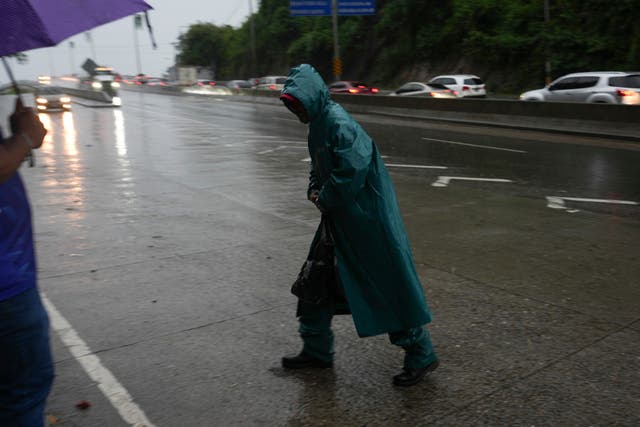Climate change strengthened hurricane winds by 18mph since 2019, study says
Warmers oceans made 40 of the storms jump an entire hurricane category, the research claimed.

Human-caused climate change made Atlantic hurricanes about 18mph stronger in the last six years, a study shows.
For most of the storms – 40 of them – the extra push from warmer oceans made the storms jump an entire hurricane category, according to the study published in the journal, Environmental Research: Climate.
A Category 5 storm causes more than 400 times the damage of a minimal Category 1 hurricane, more than 140 times the damage of a minimal Category 3 hurricane and more than five times the damage of a minimal Category 4 storm, according to the National Oceanic and Atmospheric Administration.
For three storms, including this month’s Rafael, the climate change factor boosted wind speed so much that the winds increased by two storm categories.
Authors said this is not about more storms, but increasing power from the worst ones, authors said.

“We know that the intensity of these storms is causing a lot more catastrophic damage in general,” lead study author Daniel Gifford, a climate scientist at Climate Central, which does research on global warming. “Damages do scale (up) with the intensity.”
The effect was especially noticeable in stronger storms, including those that made it to the top of the Saffir-Simpson scale of storm intensity: Category Five, study authors said.
The study looked at 2019 to 2023, but the authors carried out a quick addition for the named storms this year, all of which had a bump up due to climate change.
“We had two Category Five storms here in 2024,” Mr Gifford said. “Our analysis shows that we would have had zero Category Five storms without human-caused climate change.”
This year’s three most devastating storms — Beryl, Helene and Milton — increased by 18mph, 16mph and 24 mph respectively because of climate change, the authors said.
A different study by World Weather Attribution had deadly Helene’s wind speed increase by about 13mph, which is close, said Imperial College of London climate scientist Friederike Otto, who coordinates the WWA team and praised the Climate Central work.
Since 2019, eight storms – 2019’s Humberto, 2020’s Zeta, 2021’s Sam and Larry, 2022’s Earl, 2023’s Franklin and 2024’s Isaac and Rafael – increased by at least 25mph in wind speed. Humberto and Zeta gained the most: 31mph.
In 85% of the storms studied in the last six years, the authors saw a fingerprint of climate change in storm strength, Mr Gifford said.

Warm water is the main fuel of hurricanes. The warmer the Atlantic, Caribbean and Gulf of Mexico get, the more potential energy goes into storms. Other factors – such as high level crosswinds and dry air -can act to weaken hurricanes.
The waters in the hurricane area have increased by 1.1 to 1.6C in general and as much as 2.2C due to climate change, Mr Gifford said. Climate Central has used scientifically accepted techniques to regularly track how much warmer oceans are because of the burning of coal, oil and natural gas.
That technique uses computer simulations to create a fictional world with no human-caused warming and then compares it to current reality, with the difference being caused by greenhouse gases.
They account for other factors, such as the lessening amount of sulphate pollution from marine shipping which had been counteracting some warming previously.
To go from warmer waters to stronger storms, the authors looked at a calculation called potential intensity, which is essentially the speed limit for any given storm based on the environmental conditions around it.
MIT hurricane expert and meteorology professor Kerry Emanuel, who pioneered potential intensity measurements, was not part of the study but said it makes sense. It shows the increase in storm strength that he predicted would happen 37 years ago, he said.
Past studies have shown that climate change has made hurricanes intensify quicker, and slower moving, which causes even more rain to be dumped.





